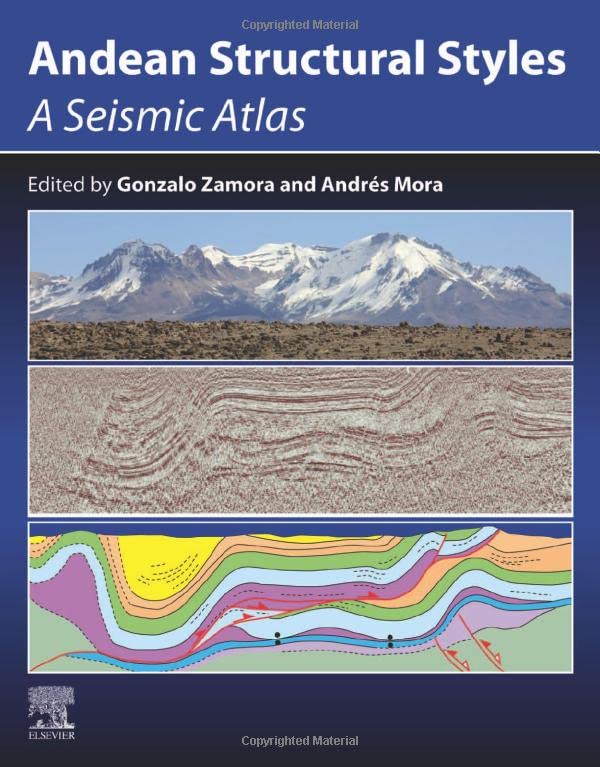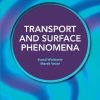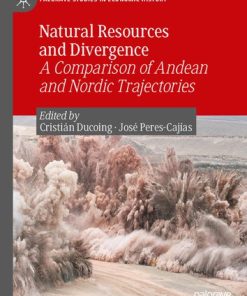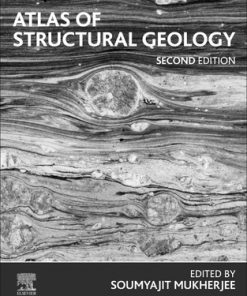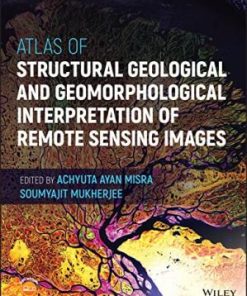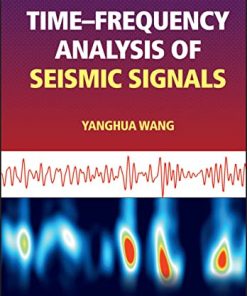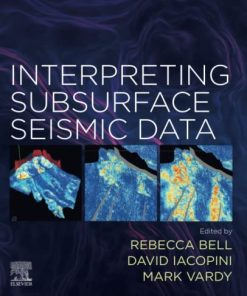Andean Structural Styles: A Seismic Atlas Gonzalo Zamora
$50.00 Original price was: $50.00.$25.00Current price is: $25.00.
Andean Structural Styles: A Seismic Atlas – Ebook Instant Download/Delivery ISBN(s): 9780323851756,0323851754

Product details:
- ISBN-10 : 0323851754
- ISBN-13 : 978-0323851756
- Author(s): Gonzalo Zamora, Andrés Mora
Andean Structural Styles: A Seismic Atlas is a comprehensive reference illustrating the variability in structural styles and hydrocarbon traps that exist in the Andean chain. The Andean chain, stretching over more than 5,000 km (3,000 mi) from Venezuela to Argentina, contains a large number of sedimentary basins which have developed in a wide range of tectonic settings. Some of these basins are highly mature, with hydrocarbon production from Paleozoic, Mesozoic, and Cenozoic sedimentary sequences, while others are still underexplored.
Andean Structural Styles: A Seismic Atlas covers topics including fold types, thrust faults, triangle zones, inversion structures, synorogenic deposits, and growth stratal geometries. These topics are illustrated by thirty-two seismic examples interpreted and uninterpreted, covering most of the Andean basins, and five chapters reviewing the structural styles of the Andes, the complexity of processing seismic in these settings, how analogue models help in the interpretation, and several outcrop analogues. This reference is invaluable to both hydrocarbon exploration of the Andes and researchers and students in the fields of exploration geology and structural geology. Also, those teaching structural geology and seismic interpretation will find a valuable resource with lots of uninterpreted seismic examples that can be used in their lectures.
Table contents:
Section I. Introduction
Chapter 1. Tectonic inheritance and structural styles in the Andean fold-thrust belt and foreland basin
Chapter 2. Seismic imaging in fold-and-thrust belts
Chapter 3. Analogue modeling as a tool to assist seismic structural interpretation in the Andean fold-and-thrust belt
Section II. Field analog
Chapter 4. Folding of a weak boundary zone between an axial zone and a frontal belt, Chicamocha Valley, Eastern Cordillera of Colombia
Chapter 5. Natural examples of regional-scale structures from the southern Central Andes and Patagonian Andes
Chapter 6. Outcrop-scale natural examples of structures from the southern Central Andes
Section III. Colombia
Chapter 7. Thrust sequence in the Sinú Fold Belt (South Caribbean Deformed Belt), offshore northwestern Colombia
Chapter 8. Relationships between normal faulting, mud diapirism and thrusting in the trailing part of the Sinú Fold Belt
Chapter 9. Strike-slip fault zone in an oblique convergent margin: Bahia Basin, Caribbean margin of northern Colombia
Chapter 10. Structural styles of the Upper Magdalena valley, Northern Andes, Colombia: case studies
Chapter 11. Forelimb deformation in basement uplifts. Example from the Sierra de la Macarena, Colombia
Chapter 12. Seismic expression of transpressional thick-skinned deformation in the southern foothills of Colombia
Chapter 13. Structural styles and evolution of the Colombian Eastern foothills Piedemonte triangle zone
Chapter 14. Seismic and structural analysis of the San Francisco oil field (Colombia). Structural controls on a complex hydrocarbon charge history
Chapter 15. La Cira Basement-high; Middle Magdalena Valley Basin, Colombia
Chapter 16. Regional structure, trap mechanisms, and basin evolution of the Middle Magdalena Basin of Colombia
Chapter 17. Structural styles of the southern Putumayo Foreland Basin, northern Andes, Colombia
Section IV. Ecuador
Chapter 18. An appraisal of basin development at the trailing edge of the Northern Andes, SW Ecuador–NW Peru
Chapter 19. The Manabí and Esmeraldas-Borbón forearc basins of Ecuador
Section V. Peru
Chapter 20. Situche Complex, Marañon Basin, Peru
Chapter 21. Large transport thrust in the Huallaga sub-Basin (northern Peruvian sub-Andean zone)
Chapter 22. The San Martín Anticline: a classic example of a fault-bend fold in the Camisea fold and thrust belt, Central Andes, Perú
Chapter 23. The Sagari-Kinteroni Anticline: an example of an out-of-sequence tectonic wedge in the Camisea area, Peru
Chapter 24. The Candamo antiformal stack, Madre de Dios Basin, Peru
Section VI. Bolivia
Chapter 25. Fault-related fold evolution in the Bolivian Northern Sub-Andean Zone
Chapter 26. Transition from thin-to thick-skinned tectonics: example from the Boomerang Hills, Bolivia
Chapter 27. Structural interpretation in the Bolivian southern Sub-Andean: from surface to hydrocarbon prospect generation
Chapter 28. Seismic interpretation challenges in the southern Subandean fold and thrust belt of Bolivia
Chapter 29. Thin skin fold belt structural style in the Argentinean–Bolivian Subandean foothills: the Madrejones Anticline example
Section VII. Argentina
Chapter 30. Structural styles of the Villa Unión-San Isidro basement-involved fold and thrust belt, northern Ischigualasto-Villa Unión Basin province of
Chapter 31. Structural styles, tectonic evolution, and petroleum systems of transverse pre-Andean structures: examples from the Cuyo and Neuquén
Chapter 32. Structure beneath the southern Payenia volcanic field, Neuquén Basin, Argentina
Chapter 33. Structural development in the frontal Malargüe fold and thrust belt, Neuquén Basin, Argentina
Chapter 34. Interpreting a complex triangle zone in the Agrio fold thrust belt, Neuquén Basin. Argentina
Chapter 35. Exploration in a thick to thin-skinned transition: Faja Plegada triangle zone. Neuquén, Argentina
Chapter 36. Foothills structure of the Andes of Tierra del Fuego, Argentina and Chile
Section VIII. Chile
Chapter 37. Inverted structures in the western Central Andes thrust belt front
Chapter 38. Interaction between inverted normal and reverse faults in the inner forearc of the Central Andes: an example from the Salar de Atacama
Index
People also search:
andean structural styles a seismic atlas
what is necessary to create typical andean-type mountain belts
which andean elements can you identify in the video
what is andean
andean style
andean style store
You may also like…
Business & Economics - Mathematical Economics
Natural Resources and Divergence: A Comparison of Andean and Nordic Trajectories 1st Edition
Earth Sciences - Geology
Politics & Philosophy - General & Miscellaneous Philosophy
Earth Sciences - Geology
Atlas of Structural Geological and Geomorphological Interpretation of Remote Sensing Images
Uncategorized
Uncategorized
Chemistry - Organic Chemistry
Earth Sciences - Geology


